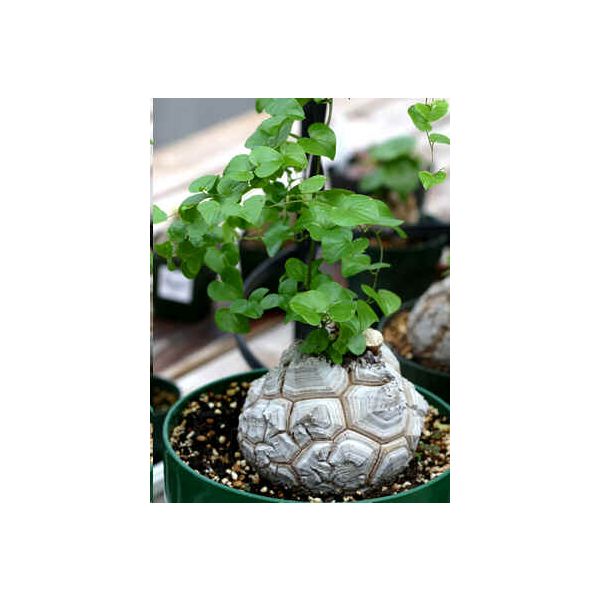Dioscorea Elephantipes Seeds (Hottentot Bread, Turtle Shell, Caudex Seeds)
Dioscorea Elephantipes Seeds (Hottentot Bread, Turtle Shell, Caudex Seeds)
The caudex of dioscorea elephantipes is similar to the shell of a turtle, thus its name. As it ages, it tends to curve in. Can be cultivated as a bonsai.

Delivery
All orders shipped with UPS Express.
Always free shipping for orders over US $250.
All orders are shipped with a UPS tracking number.
Returns
Items returned within 14 days of their original shipment date in same as new condition will be eligible for a full refund or store credit.
Refunds will be charged back to the original form of payment used for purchase.
Customer is responsible for shipping charges when making returns and shipping/handling fees of original purchase is non-refundable.
All sale items are final purchases.
Help
Give us a shout if you have any other questions and/or concerns.
Email: contact@domain.com
Phone: +1 (23) 456 789
Availability: In stock
SKU
Dioscorea Elephantipes
Dioscorea elephantipes, also known as Turtle Shell Plant, Caudex Plant, or Hottentot Bread, is a unique caudiciform species native to South Africa. It features a striking, woody caudex that serves as a water reserve, enabling it to survive in arid conditions. This tuberous structure can grow over 80 cm (31 inches) in width and height, while the climbing stems can reach up to 2 meters (6.5 feet).
Growth and Appearance
- Caudex: Resembles a turtle shell, becoming more textured and curved with age.
- Leaves: Dark green, heart-shaped, emerging from long, twining stems.
- Flowers: Small, greenish-white, unscented, and insignificant.
- Dormancy: Unpredictable, may enter dormancy at any time.
Cultivation and Care
- Climate: Best suited for USDA hardiness zones 10-11 (tolerates temperatures between 35°F (1°C) and 40°F (4°C) in winter).
- Soil: Well-draining, slightly fresh, semi-desertic mix.
- Light: Prefers bright, indirect sunlight; too much direct sun can be harsh.
- Watering: Moderate; reduce watering significantly during dormancy. Avoid wetting the caudex.
A Stunning Bonsai-Like Succulent
Highly sought after by collectors, Dioscorea elephantipes can be cultivated as a bonsai-style plant, making it a fascinating addition to any succulent or caudiciform collection.
| Common name | Elephant's Foot |
|---|---|
| Species | Dioscorea elephantipes |
| Germination | Use a mix of 2/3 humus and 1/3 sand. Plant your seeds at 1/3 inch deep at the end of spring. Keep soil humid, but not soaked. Keep it almost dry in winter. Keep the pot in a well-ventilated and luminous spot. The ideal temperature is 28§C. Germination for this type of plant can be very long. 6 months can pass with no sign of growth. Don?t get discouraged. |
| Price View | Price Range |

